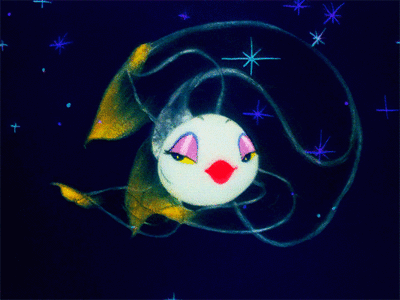Happy Birthday to Fantasia which first graced cinema screens in 1940. Nathanael Smith on a genuinely bravura classic
Support independent, non-corporate media.
Donate here!

On November 14th 1940, Walt Disney Studios released their third feature-length animation, the magical musical extravaganza that is Fantasia, which is about to celebrate its 75th anniversary. The film, for those who are yet to discover this timeless classic, is a series of shorts animated around a piece of classical music, linked together by the fusty narration of Deems Taylor, who explains the inspiration behind each animation and also talks viewers through each member of the orchestra. Each segment differs in style and intent, bringing the music of Bach, Grieg and Mussorgsky to life. The film was a financial disaster when originally released, thanks to the expensive ‘Fantasound’ system that Disney wanted to be used for screenings, effectively quashing the visionary’s dream of having an ongoing series of Fantasias (something that would only be realised in the Fantasia 2000).
Since then, however, the film has only grown in stature as critics and fans have realised the tremendous importance of the film. It’s one of only two films in the American Film Institute’s list of the 100 greatest American films (the other is Snow White, which is silly but that’s a whole other topic) and it has appeared in best animation lists compiled by Time Out, Film 4 and Rotten Tomatoes. It changed the world of animation. The simple act of Mickey Mouse shaking conductor Leopold Stokowski’s hand revolutionised the potential of what animation could do. Without it, there’d be no Mary Poppins, Who Framed Roger Rabbit or possibly even Gollum.
Fantasia achieved a perfect harmony between music and image. Disney had been fascinated with this concept since the early days of animation, pioneering synchronised sound techniques with their legendary short Steamboat Willie. For their first feature length film, Snow White, the team of animators decided on including a scene of singing and dancing that defied the time and budget pressures to revel in mixing music with animation. This preoccupation reached its zenith in Fantasia, which was all about letting the music inspire every frame of the animation. The commission was simple: listen, then animate.
Arguably, not every segment works as a result of this method. Beethoven’s Pastoral Symphony is an iconic piece of music, a complex work that exists on the cusp between the classical and romantic periods but doesn’t suit the story – a stretched tale of creatures from Greek mythology having a party –Disney puts to it. The simpler animation techniques and cutesy centaurs reduce a rich orchestral arrangement to a flight of whimsy that tests your patience as it drags out its slight narrative. Yet this is perhaps the only major misstep in a film full of bravura sequences that celebrate the possibilities of animation when the medium was still in its infancy.
Over the course of seven different shorts, the music is used to inspire abstraction, humour, fear, awe and sheer aestheticism. The Sorcerer’s Apprentice, the famous Mickey Mouse and magic brooms short, has been parodied to the point of it losing its original power, but the original matching of music to story is still an inspired choice to the extent where the two have become inseparable. Meanwhile, it’s unthinkable for modern audiences to have entire sections that are just colours and shapes dancing to the music of Bach. It’s a film that is equally comfortable charting the course of evolution to Stravinsky’s Rites of Spring as it is ending on a chorus of worship as angels banish the evil of demonic activities.
Ennio Morricone famously composed the score for Once Upon A Time in the West before Leone had even turned on the camera. Few other film makers dare to let the music guide the direction of the film and scores can often be an afterthought. Directors like Don Hertzfeldt, Terence Malick and Werner Herzog use classical music with tremendous impact in their films, and occasionally there are works like Moonrise Kingdom, which seems to be shaped around Benjamin Britten’s Young Person’s Guide to the Orchestra. Yet few manage the total synthesis of music and image that Fantasia achieves. It dares everything that follows it to be more ambitious with their music choices and to let the rhythms of the orchestra be the first editor.
For a film made in 1940, the animation in some sequences has barely been improved upon in the years since. The delicacy of fairies bringing about the changing of the seasons in the Nutcracker Suite is a wondrous sight, capturing the magic of nature in a manner that can only be achieved outside of live action. Fantasia fully embraces the capacity of animation to unfold narratives visually, deprived of the dialogue that so many storytellers rely upon. As such, it’s cinema in its purest form, combining the artistry of music with what was, at the time, a medium still in its infancy. It showed the possibilities of what could be achieved with hand drawn cels, and transformed cinema in the process.









